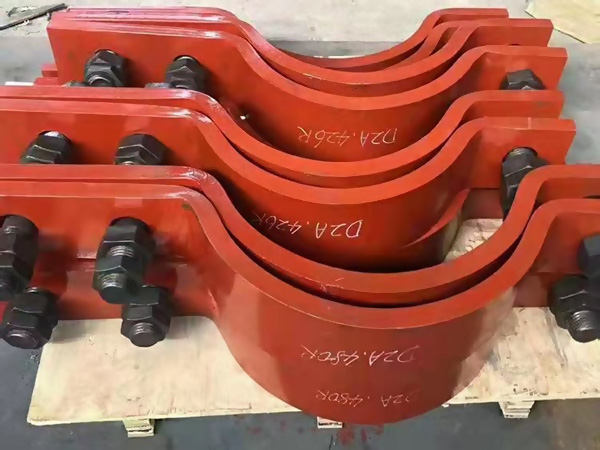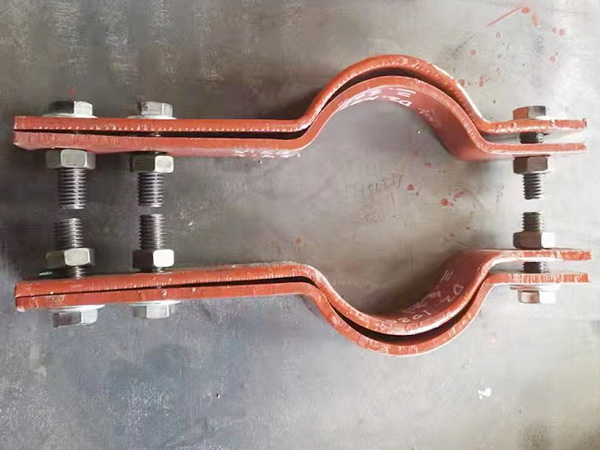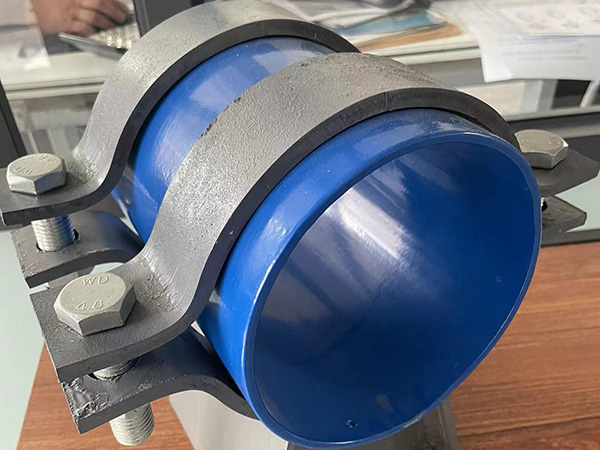The Evolution of Industrial Pipe Clamps: Materials, Design, and Performance
Author:Mingde Time:2025-10-29 16:50:49 Click:76
For decades, industrial pipe clamps have been essential to the safety and stability of global pipeline systems. These components, once regarded as simple fastening tools, have transformed into high-precision elements critical to vibration control, load distribution, and thermal protection.
As an experienced Pipe Clamp Manufacturer and China supplier, our production experience reflects this evolution — where advanced materials, modern engineering design, and automated manufacturing have completely redefined performance expectations.


1. From Primitive Supports to Precision-Engineered Components
In the early stages of industrialization, pipe clamps were rudimentary — typically made of cast or mild steel, built purely for mechanical restraint. They served their purpose but offered limited adaptability to fluctuating pressure, temperature, and vibration.
Today, this has changed dramatically. Modern industrial pipe clamps integrate advanced geometry and ergonomic functionality, improving both installation efficiency and mechanical reliability. Adjustable tension systems, rubber-lined inserts, and modular configurations now allow clamps to absorb stress and extend pipeline life, supporting applications from refineries to power stations.
2. Material Evolution: Strength, Corrosion Resistance, and Sustainability
Material development has been the key driver behind the modernization of pipe clamps.
·Stainless Steel (304, 316): The most common choice for high-corrosion and sanitary environments, ensuring durability in marine, chemical, and food processing systems.
·Carbon Steel: A cost-efficient material widely used in industrial settings where strength is prioritized over corrosion resistance.
·Aluminum and Zinc Alloys: Lightweight, adaptable for HVAC and low-load systems where mobility matters.
·Coated and Composite Materials: Surface-treated clamps with polymer coatings or PTFE inserts enhance insulation and moisture protection.
Many Chinese manufacturers now integrate hybrid material technology — combining metal rigidity with polymer flexibility — creating clamps that perform reliably even under fluctuating temperature gradients. This approach also supports large-scale, bulk supply manufacturing, helping international buyers maintain both performance and cost balance.
3. Design Breakthroughs Driving Modern Performance
The design of industrial pipe clamps has evolved far beyond simple bolt-and-nut connections. Engineering refinements have introduced new features that improve both operational efficiency and pipeline safety:
a. Vibration and Acoustic Dampening
Elastomer or rubber linings in modern clamps absorb mechanical vibrations, minimizing structural noise transmission across industrial systems.
b. Thermal Expansion Management
Sliding and spring-loaded clamp models now accommodate pipeline expansion and contraction, preventing fatigue cracks and structural stress in long-run pipelines.
c. Quick-Assembly Mechanisms
Fast-mount clamps with snap-fit or boltless systems are gaining popularity for their ease of installation and time efficiency.
d. Digital Monitoring Integration
Some cutting-edge models now include embedded sensors that monitor temperature and load, forming part of smart pipe support systems — a growing trend in automated industrial networks.
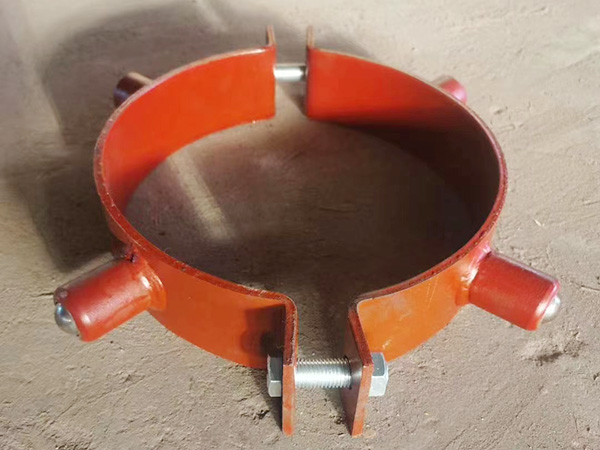
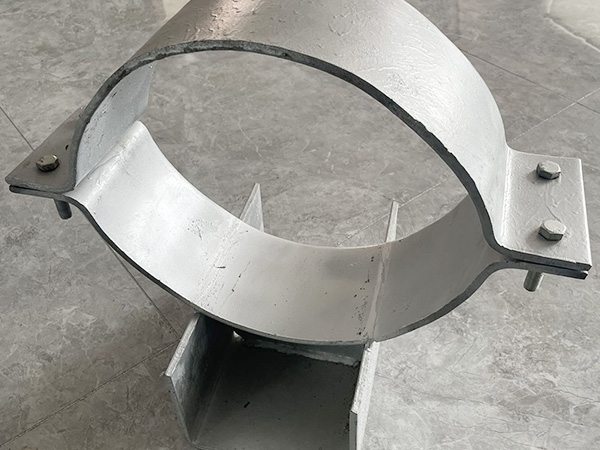
4. Application Spectrum Across Industries
From oil and gas refineries to urban infrastructure and power generation plants, industrial pipe clamps are indispensable.
·In chemical facilities, stainless steel and PTFE-coated clamps prevent corrosion and chemical degradation.
·In construction and HVAC, lightweight adjustable brackets help with quick installations and vibration control.
·In energy systems, specialized insulation clamps prevent heat loss in steam or cryogenic pipelines.
As a Pipe Clamp Manufacturer from China, our factory supplies bulk orders for both domestic and overseas projects, ensuring consistency in quality, performance, and technical compliance.
5. Quality Assurance and Performance Validation
Every high-grade clamp undergoes a series of mechanical and environmental tests to ensure durability and safety:
·Load and Pressure Testing for mechanical reliability.
·Corrosion and Salt-Spray Tests to verify long-term surface protection.
·Vibration Fatigue Analysis to simulate operational conditions.
·Thermal Cycling Tests for temperature adaptability.
Chinese factories have adopted automated inspection systems, laser measurement tools, and digital torque calibration — aligning production with ISO 9001, ASTM, and DIN 3015 standards.
6. Balancing Cost and Performance: The Advantage of Chinese Supply
When sourcing industrial components globally, balancing cost-performance ratio remains crucial.
Thanks to automation, optimized logistics, and bulk steel procurement, Chinese pipe clamp manufacturers can deliver high-quality bulk production at competitive prices.
This efficiency makes China suppliers a reliable choice for EPC contractors, pipeline integrators, and industrial distributors seeking dependable long-term partnerships without compromising product reliability.
Conclusion
The evolution of industrial pipe clamps reflects a journey from mechanical simplicity to engineering sophistication. Today’s clamps are smarter, stronger, and more efficient — designed to perform under extreme industrial conditions.
By partnering with a Pipe Clamp Manufacturer and China factory that offers bulk supply capabilities, businesses can secure long-term reliability, consistent quality, and cost-effective solutions — essential foundations for high-performance pipeline systems.
References
GB/T 7714:Qu W, Zhang H, Li W, et al. Influence of support stiffness on dynamic characteristics of the hydraulic pipe subjected to basic vibration[J]. Shock and Vibration, 2018, 2018(1): 4035725.
MLA:Qu, Wei, et al. "Influence of support stiffness on dynamic characteristics of the hydraulic pipe subjected to basic vibration." Shock and Vibration 2018.1 (2018): 4035725.
APA:Qu, W., Zhang, H., Li, W., Sun, W., Zhao, L., & Ning, H. (2018). Influence of support stiffness on dynamic characteristics of the hydraulic pipe subjected to basic vibration. Shock and Vibration, 2018(1), 4035725.
 Hot Products
Hot Products
 Contact Us
Contact Us
Contact:
Mobile:+86 +86 19133378808
Website:mingdepipe.com
Address:


